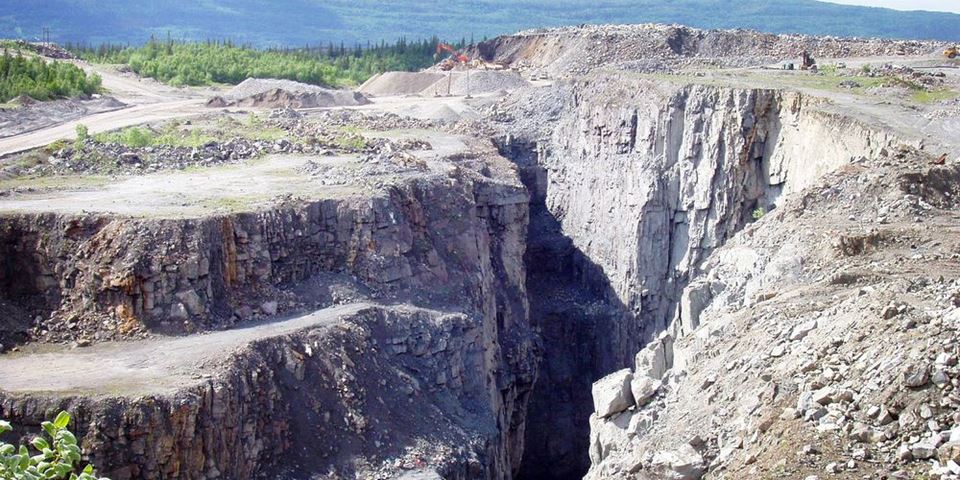The opinions expressed in this article are those of the authors alone. This article was first published in the engineering periodical Teknisk Ukeblad and is reprinted here with the permission of the magazine.
Mineral resources are in greater demand than ever. Contemporary society will not survive, nor will the green transition succeed, without them. However, the extraction of these raw materials creates a problem. The process generates enormous volumes of surplus waste in the form of crushed and pulverised rock.
Despite increasing and widespread protests from environmentalists, mining waste continues to be dumped in natural environments – both on land and at sea. This represents a major problem in terms of societal acceptance.
We argue that it is entirely possible, as an alternative to dumping, to identify useful applications for this waste, but this presupposes that society is willing to invest in developing more expertise in this field.
14 million tonnes annually
According to the Norwegian Directorate of Mining, so-called ‘non-saleable rock waste’ generated by mineral recovery amounts to in excess of 14 million tonnes annually.
On top of all this, the start-up of new and planned mining operations, such as Nussir’s project in Repparfjorden in Finnmark and Nordic Mining’s operation at Førdefjorden in Vestland, will result in a significant increase in surplus rock volumes from the Norwegian mineral extraction sector.
The same will result from the revitalisation of disused mineworkings such as those in Sydvaranger in Finnmark.
Concrete solutions
We take this opportunity to present two examples of how surplus waste rock from the Norwegian mineral extraction sector can be transformed into a resource.
Construction of a new airport at Bodø in Nordland, and the subsequent development of a new urban district on the land vacated by the old one, will involve the building of 15,000 homes and the creation of 20,000 jobs. The project will demand an enormous volume of raw materials, even if much of the concrete used in the current buildings will be recycled.
A little further south, the Rana Gruber mines continue every year to dump three million tonnes of surplus waste rock in connection with the extraction of iron ore from the mines at Storforshei. This material has properties that make it ideal for use as an ingredient in concrete.
The problem is that it currently exists as fine sand (particle sizes of less than 0.25mm) which, according to the current industry standard, is a little too fine for use in concrete. The material can however play a role as an ingredient in concrete, provided that Norway is willing to invest in knowledge development that makes it possible to modify the standard. The transport distance between Bodø and the mines is just a little more than 200 kilometres by ship.
Underlayment for transported agricultural soil
The practice of transporting agricultural soils to make way for development projects may offer a further application for surplus waste rock. Such transportation may become more widespread in a world that places greater emphasis on biodiversity conservation.
It is perfectly possible to utilise surplus rock materials that weather easily as underlayment in locations where transported soils are deposited. These rock materials are often rich in nutrients such as phosphates and nitrates, and also occur in grain sizes that are suitable for such applications.
Scope of opportunity
The proportion of surplus waste rock generated by mineworkings varies enormously depending on the type of mineral that is being recovered. In copper mines, such materials make up about 97 percent of the rock volume extracted from the subsurface. In the case of unconsolidated sediments such as sand and gravel, the equivalent volume is 10 percent.
Minerals include ores – the source materials for key metals – as well as crushed rock, sand and gravel. The future accessibility of these resources, combined with that of clean fresh water, will determine the future scope of human opportunity.
Access to many essential minerals is currently controlled by a very small number of countries – primarily Russia and China, together with a few countries in America and Africa.
With this in mind, the EU has declared that Europe should aim to become as self-sufficient as possible in the face of heightened geopolitical unrest. In this context, Norway is counted as a small country. Nevertheless, we have the potential to become a key European minerals producer, provided that we succeed in achieving adequate levels of sustainability in our minerals sector.
Implementing Norway’s minerals strategy
With the announcement of its new minerals strategy, the Norwegian government has recognised that the country needs to develop just that – a sustainable minerals sector.
In this context, the term ‘sustainability’ first and foremost addresses the fact that recycling and reuse must be adopted to replace some of the virgin materials currently being extracted. Unless this happens, it will be difficult for the industry to expect acceptance from wider society.
Existing standards for applications in a variety of industrial sectors balance a material’s properties against costs. In this scenario, surplus rock waste will often come up short.
At the same time, European targets for minerals recovery, as set out in the Critical Raw Materials Act, are very ambitious in areas such as reuse, offering an indication that new regulations may be in the pipeline in this field.
All this indicates that the Norwegian government should be taking action to implement its minerals strategy by promoting initiatives that stimulate knowledge development in fields such as the innovative use of surplus waste rock materials from the minerals sector.


